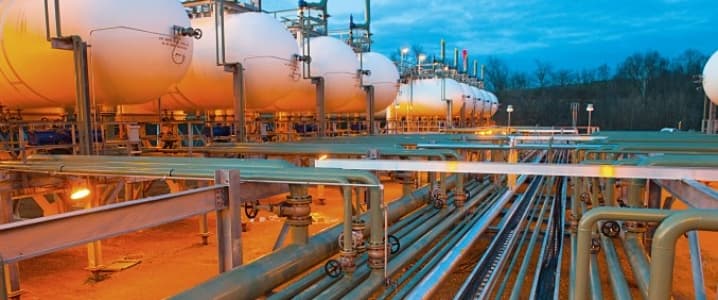The EIA published its latest Short-Term Energy Outlook and it is not exactly the most bullish report the agency has ever put out.
The EIA believes that the losses to U.S. oil production are largely over. It estimates that the U.S. will produce 8.6 million barrels per day (mb/d) in 2017, which is higher than the current output levels of just around 8.5 mb/d. The rig count is up and investment is returning to the shale patch, which should allow for more drilling and new sources of supply. The EIA revised up its forecast from last month for 2017 production by 0.1 mb/d.
At the same time, the EIA expects global inventories to build at a 0.3 mb/d pace next year, which is 0.3 mb/d more than the agency predicted in its previous forecast. The EIA sees higher production from the U.S. and Russia, combined with weaker global demand, extended the glut.
But there is other evidence that things appear to be turning a corner for U.S. drillers. The FT reports that investors are regaining their appetite for risky energy debt, with yields on high-risk junk bonds in the energy sector plummeting to just 7 percent, down from a peak of 21 percent earlier this year. Junk-bond sales from energy companies have also returned, the FT says, with five sales since September, accounting for more than half of the $3.8 billion in junk energy debt offered this year. “There is a pool of capital that wants exposure to the oil industry,” Rob Santangelo, head of equity capital markets origination in the Americas for Credit Suisse, told the FT. “We think the market is ready to put money to work.”
The rig count continues to rise and the share prices for E&Ps across the country have climbed in recent weeks. Many of them owe a great deal of thanks to OPEC, which has shaken the market out of its slumber, sparking a renewed sense of optimism even if the cartel’s ability to materially affect global supplies is ultimately questionable. Either way, investors are growing more confident as oil prices rise above $50 per barrel.
The EIA might see U.S. shale as resilient, but that could come at the expense of oil prices. The EIA’s 2017 forecast for Brent came in slightly lower this month, down $1 per barrel compared to last month’s report to $51 per barrel. That is not exactly the most exciting forecast – the agency expects oil prices to pretty much remain flat for another year. Related: IEA Pours Cold Water On Oil Price Rally
On the natural gas side of things, the predictions are a bit more curious. As noted in a previous article, U.S. natural gas production hit a peak in February 2016 and has been declining since then. A severe cutback in drilling – including less oil drilling, which affects associated gas production – has led to a drop off in gas output by about 5 percent this year. As a result, prices have crept up above $3 per MMBtu in recent weeks as supply continues to fall and demand rises.
But looking forward, the EIA has some seemingly contradictory figures for 2017. The agency sees natural gas production somehow rebounding sharply, surging from 77.5 Bcf/d in 2016 to 81.2 Bcf/d next year. That 3.7 Bcf/d increase is a bit hard to believe given that gas production will likely fall for the remainder of this year and into at least the early months of 2017. But it seems all the more improbable given that at the same time the EIA sees natural gas prices averaging just $3.07 MMBtu in 2017. With supply tightening, and prices already at $3.34/MMBtu for November 2016 delivery, the price forecast seems a bit odd.
For production to rise as sharp as the EIA believes, prices will probably need to be higher. If prices stay stuck at $3/MMBtu, it would seem like a bit of stretch to see production rise by so much next year. One of those predictions is likely off significantly.
Forecasts are inevitably wrong, and should not be taken as gospel. But the EIA’s natural gas estimates are hard to reconcile.
By Nick Cunningham of Oilprice.com
ADVERTISEMENT
More Top Reads From Oilprice.com:
- Taliban Oil: Did Afghanistan Recover A Hidden Oil & Gas Treasure?
- Gold Prices Just Did Something They Haven’t Done All Year
- Oil Prices Extremely Volatile After Massive Crude Build


















